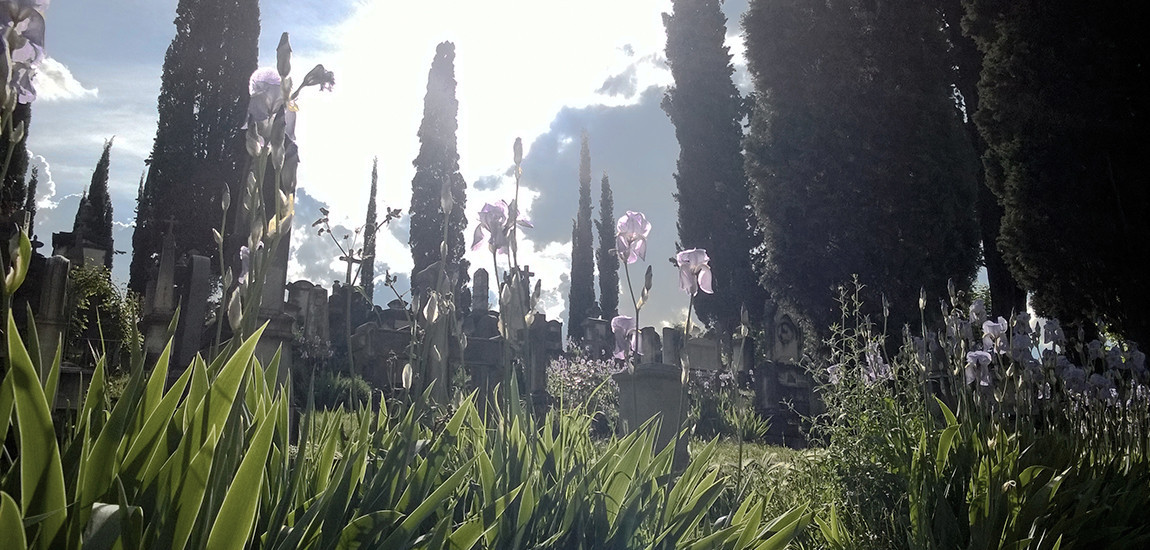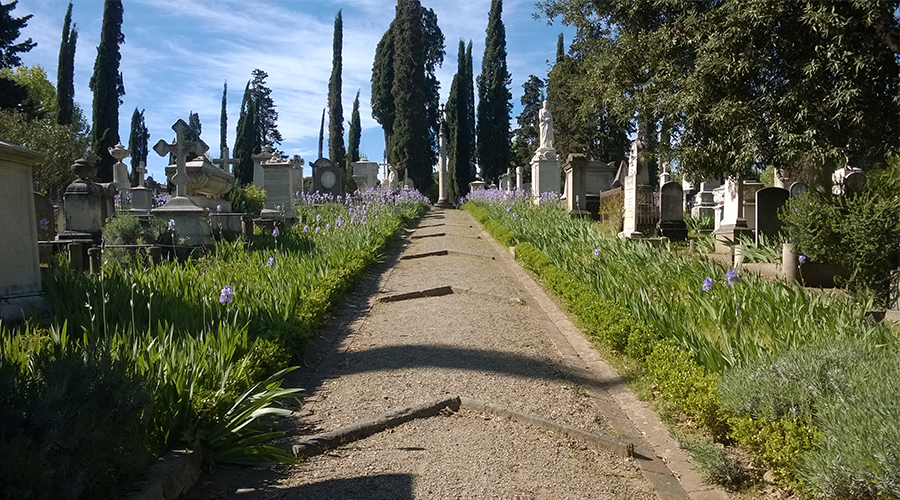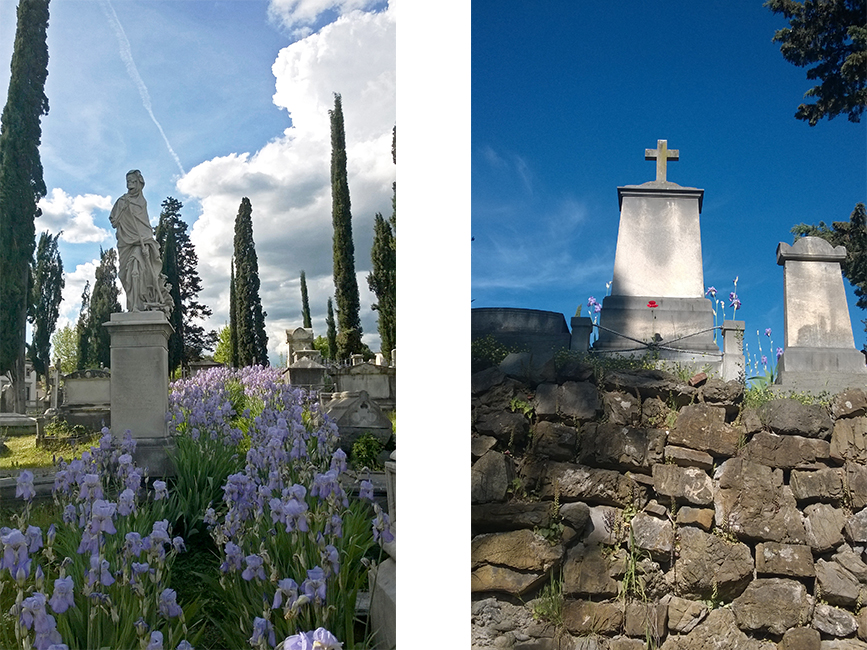
An island in the city: the English Cemetery of Florence
Is it possible to find an oasis of peace and quiet right in the middle of the city traffic? In Florence, you can.
If you venture outside the historical center, in Piazza Donatello, you will find the English Cemetery. Originally called Protestant Cemetery of Porta a Pinti, it was renamed overtime due to the large number of English men and women buried here.
The cemetery was built in 1827 by the Swiss Evangelical Reformed Church, and when Florence became the capital of the newly founded Kingdom Italy in 1865, the cemetery became part of Giuseppe Poggi’s renovation project and it ended up being in the middle of the avenues circling Piazza Donatello.
Florence was an important part of the Grand Tour - the journey that many artists and aristocrats embarked on to enrich their culture - so in the nineteenth century the British came to the Tuscan capital attracted by its art and by the ideas, widely supported in England, that had brought about the Italian Risorgimento. Over half the graves in the English Cemetery are occupied by members of the Anglo-Florentine community of that period.
Perhaps the most visited grave is the one of Victorian poet, Elizabeth Barrett Browning who lived in Florence with her husband for many years. She died and was buried in this cemetery in 1861, and was joined a few years later by Fanny Holman Hunt, wife of artist William Holman Hunt who sculpted her grave himself.
Among the most famous people buried here there are Giampietro Vieusseux (founder of the Gabinetto Vieusseux, one of the main meeting places for intellectuals in Florence during the Risorgimento), poet Arthur Clough, writer Frances Milton Trollope, writer Walter Savage Landor and Beatrice and Claude Shakespeare (the last descendants of William Shakespeare).

This cemetery even inspired art masterpieces such as the series of the Isle of the Dead by symbolist Swiss painter Arnold Böcklin. For years art historians tried to locate the place that inspired the landscape of the picture, and eventually came to the conclusion that it was the English Cemetery in Piazza Donatello.
If art historians are right, then the story behind the painting is very sad and starts with the artist moving to Florence in 1874. Here her daughter was born, but unfortunately died as she was still an infant. She was then buried in the English Cemetery located just a few steps from the studio of the painter.
Böcklin never provided an explanation for his work, but we do know that he painted the first three versions of the painting here in Florence, probably inspired by the cemetery where his daughter was buried, depicted as a rocky island with cypress trees at its center, enveloped in an atmosphere radiating a strong aura of spirituality.
The busy streets surround the raised cemetery, just like the sea around an island, but once you enter this magical place you will not feel the presence of the city around you anymore.
April is the perfect moment to visit the cemetery, as the irises are in bloom and their delicate blue pops out among the white marble tombstones.
Open Monday 9 AM – Noon, Tuesday – Friday 3 PM – 6 PM (summer) and 2 PM – 5 PM (winter). Free entrance.




